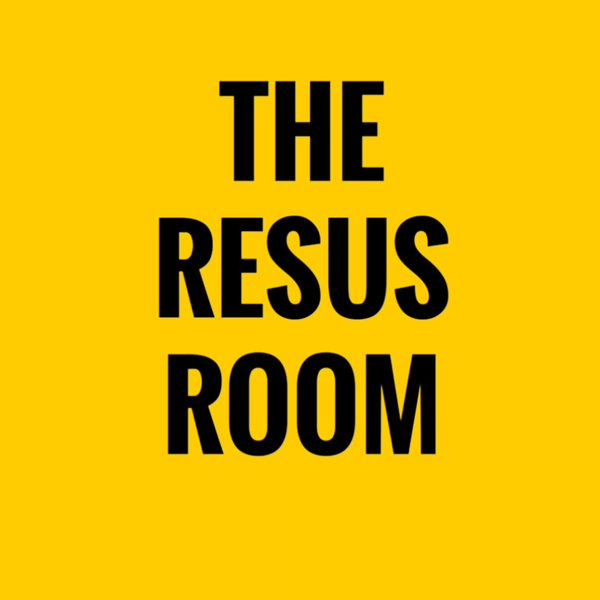Intraosseous Access; Roadside to Resus
The Resus Room
Simon Laing
4.8 • 678 Ratings
🗓️ 21 June 2022
⏱️ 64 minutes
🧾️ Download transcript
Summary
So, as we all know, there are loads of presentations that we see in Emergency Medicine that require us to gain rapid access to the circulation. Either to administer medicines around the body or to get fluids into the circulation.
Now there’s a number of different ways we can get them into the circulatory system for them then to get to their sites of action, each of which comes with its pros and cons. There’s buccal, inhaled, intramuscular, sublingual, intranasal etc etc….
But, in the vast majority of cases we gain this access to the vasculature through intravenous access and a peripheral cannula. That means that iv access is a very common procedure in emergency care. The great news is that the equipment is cheap, there are multiple sites for insertion and it’s often feasible regardless of the patients age or presenting complaint. Compared to all the other options for drug administration, iv access and administration of drugs via the IV route, results in 100% bioavailability of all medicines because it avoids the first pass metabolism in the liver, and distribution around the body is rapid because it bypasses the need for absorption into the vasculature.
So that’s all good, so why are we doing an episode on intraosseous access then? Well, iv access and we as clinicians, are not infallible. And as we’re all too aware, gaining IV access can be challenging. There are other patient factors to like iv drug use, the morbidly obese and paediatric patients when everything is just smaller and more unfamiliar. So all of these factors increase the technical difficulty of iv cannulation. If we add to that some of the environmental issues we might find in the prehospital setting - so poor lighting or difficult patient access, it’s not a huge leap to realise that it would be great to have an alternative vascular access option available to a broad range of emergency care providers. And this is where IO access comes in.
So what will we be covering in this episode;
-A recap on the anatomy of bones
-Indications for IO access
-The evidence on IO access and administration
-Insertion site
-Needle selection
-Contraindications
-Case examples
Once again we’d love to hear any thoughts or feedback either on the website or via twitter @TheResusRoom.
Enjoy!
Simon, Rob & James
Transcript
Click on a timestamp to play from that location
| 0:00.0 | Welcome to the Recess Room podcast. |
| 0:03.5 | Five, four, three, two, one, fire. |
| 0:12.0 | So hi, and welcome back to the Reeser Room podcast. |
| 0:15.7 | I'm Simon Lang. |
| 0:17.1 | I'm Rob Fenwick. |
| 0:18.3 | And I'm James Yates. |
| 0:19.6 | And we're back with another roadside to recess. |
| 0:22.2 | And this time we're looking at intra-ausius access. |
| 0:26.6 | Yeah, we certainly are, aren't we? |
| 0:27.9 | And I think this is a really, really interesting topic. |
| 0:30.3 | Because I was dwelling on this, and I think I owe is like the hyperangulated blade of vascular access. |
| 0:36.3 | It's something that's there to support us when things |
| 0:39.0 | are going wrong, but I'm not sure we give it enough thought and enough knowledge behind it. |
| 0:44.1 | So hopefully this episode is going to draw all that together and make our practice around |
| 0:48.1 | IO a little more thoughtful. Absolutely, Jimbo. Couldn't agree with you more. I think it's one |
| 0:53.5 | of those things I love to teach I.O. |
| 0:55.6 | Because there's so much nuance involved in it. It looks outwardly, really simple. And you see people do it really slightly. |
| 1:01.5 | But there are some real pearls we can deliver here to you guys, hopefully. |
| 1:05.4 | Hopefully one of them won't include delivering a hyper-angulated I.O. needle. |
| 1:09.6 | But we'll wait and see what James has got |
| 1:11.7 | to offer us on that one. Before we get into the episode, a huge thanks to S.J. Trem, the Scandinavian |
| 1:17.7 | Journal of Trauma, Resuscitation, Emergency Medicine, who support the podcast and make this all |
... |
Please login to see the full transcript.
Disclaimer: The podcast and artwork embedded on this page are from Simon Laing, and are the property of its owner and not affiliated with or endorsed by Tapesearch.
Generated transcripts are the property of Simon Laing and are distributed freely under the Fair Use doctrine. Transcripts generated by Tapesearch are not guaranteed to be accurate.
Copyright © Tapesearch 2025.

